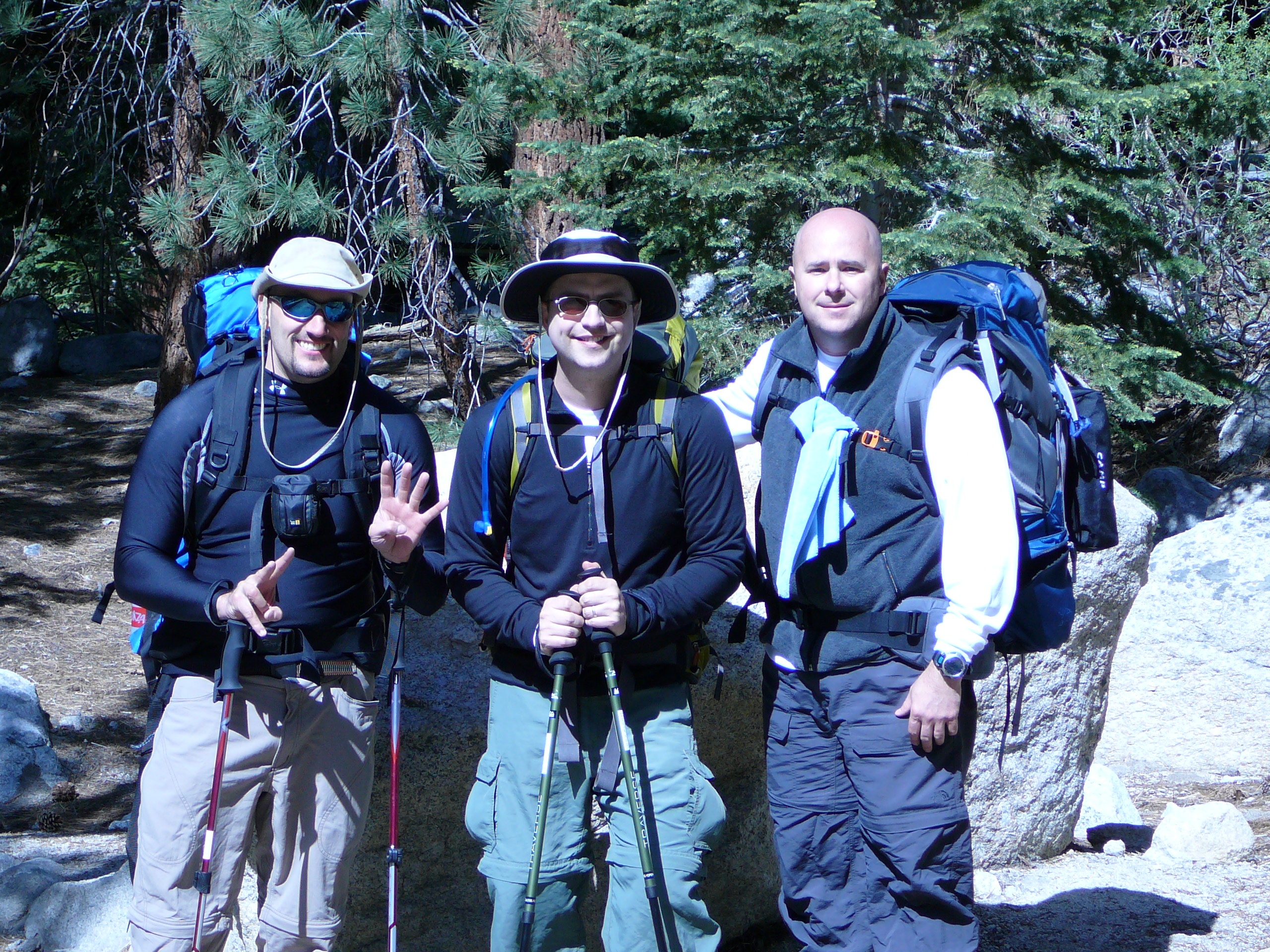
I survived Mt. Whitney.
I say this only half in jest, because there were some challenges that could have been deadly in the worst case scenario. For an amateur hiker, altitude, weather, conditioning, trail conditions, and bears, all pose magnified threats. I was sure to be aware of all the above, and to stay as cautious as possible.
So, where to begin… Last Saturday we camped at the base of the trail. Me and my two cohorts did a brief warm-up hike on a trail that is right in camp and goes downhill away from the site. It was a nice way to see how we would react to a higher altitude, even if 8,000 feet is relatively low compared to what we would experience throughout the real hike.
We started the next morning at about 8:30 a.m. At the trailhead there’s a weighing station for your bag. Mine weighed in at 31 pounds, which was the lightest of the three of us. Jeff’s was 36 pounds, and my best friend Doug had the distinction of the heaviest load – 41 pounds, which included the bear canister (used to thwart any unwelcome hairy visitors).
As one might expect when climbing a mountain, you are immediately on an incline, and it wasn’t too long before I was huffin’ and puffin’. This was remedied with methodical short breaks. After the first mile or so I got into a groove. But when we got up to the marsh area where it levels off a bit (I believe at about 10,000 feet), I started to get my first signs of what I presume was altitude sickness. It was only a subtle headache with a little bit of an effect on my vision (almost like a buzz, without the fun). That, combined with feeling beat up all over, made me contemplate setting up camp much earlier than expected.
This, of course, presented all kinds of complications, since I would have to camp alone if the guys were to continue to trail camp at 12,000 feet… still about three miles away.
After Doug talked a little sense into me, we sat for about 15 minutes, ate a Clif bar, and pressed forward. Thirty minutes of hiking passed and I was back into the groove. We made it up to our campsite at 12,000 feet. If memory serves, we arrived at about 6:30 p.m., which made for a solid 9-10 hours of hiking.
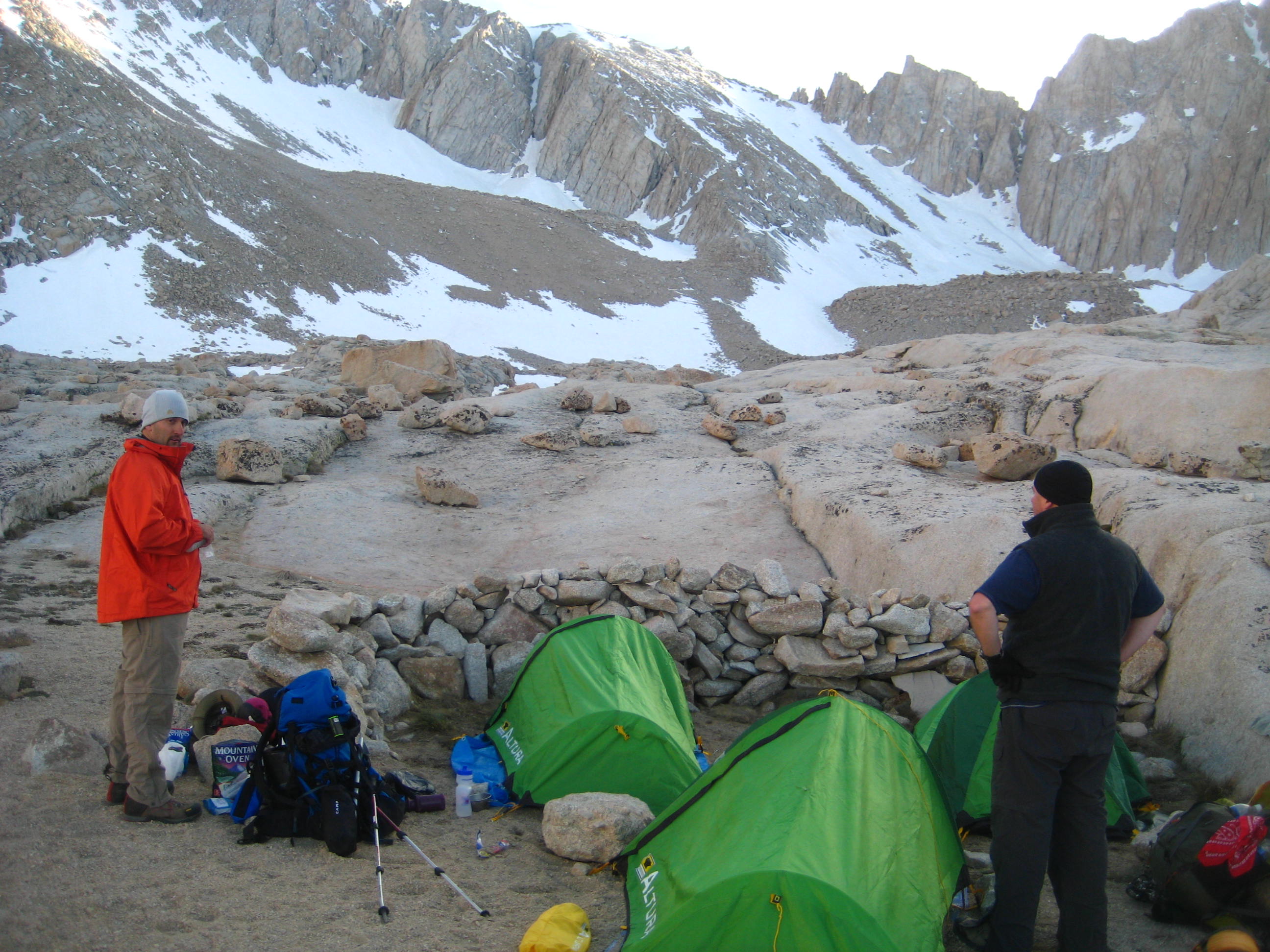
I was flat out tired, and still had some of the minor signs of sickness (no nausea, though). I pretty much resigned myself to the fact that it was a good idea to hang here the next day instead of pressing forward to the summit. I was being a little conservative, but considering my experience level, it was a wise decision. That’s because it saved me 10 miles of hiking on day two, which would have been combined with the mandatory remaining six miles to reach our cars.
As Doug and Jeff made their way to the summit, I had all day to stare at my surroundings. The air was dry and it was windy. The silence was occasionally broken by falling rocks on opposing mountain sides. The sound was reminiscent of galloping Clydesdales or a truck driving across a gravel-lined driveway. The fact that these could have been 50-100 pound rocks was not lost on me.
My only company was a constant morning wave of marmots visiting for a chance at a stolen meal. Shy, they weren’t. In fact, one snuck up within a foot or two of me and stole one of my energy bars!
The dry and windy conditions made frequent hydration necessary. Luckily there was an ice-cold glacial stream that ran about 100 yards from our camp, just over a ridge of rocks. To illustrate the oxygen deprivation at 12,000 feet, there were times when I would walk across the ridge and have to stop halfway because I was out of breath.
After enduring 10 hours alone, I came to realize that I needed all the energy I could muster on our final day, because Jeff and Doug returned from the summit an hour later than expected. In fact, when I lost radio contact with them for two and a half hours, I started to mentally prepare for a solo descent that evening or the next morning if, God forbid, something happened.
Luckily I got a call from Doug as I was half asleep at 4:30 p.m. telling me they were on their way.
When they returned, I learned that Jeff got within a couple hundred yards, but didn’t push it because he had all the signs of altitude sickness. Not to mention the two of them were running out of daylight. They returned to camp at 6:30 p.m.
More than half of our six mile descent was in the dark. As you will see in one picture of me crossing a snow-covered cliff (on the way up), it made for a challenging descent, and would have been even harder had I pushed myself to the summit.
Our descent took four hours. Much quicker than our ascent, of course. But it was not without challenges. For one, we were in the dark with only our headlamps to illuminate the 5-10 feet in front of us. It helped immensely. And in some ways, the dark made us lock into the immediate focus of putting one foot in front of the other.
But, we had to traverse two snow crossings that were flat out dangerous to start with, but now we were going downhill… at night. That meant icier conditions and more chance of slipping. If you slipped, you were in trouble. There was no proper trail in the snow, just previous hikers’ footprints where you had to trace their tracks. I can honestly say it was the scariest moment in my life. It took all my focus and patience not to rush across and make a false move.
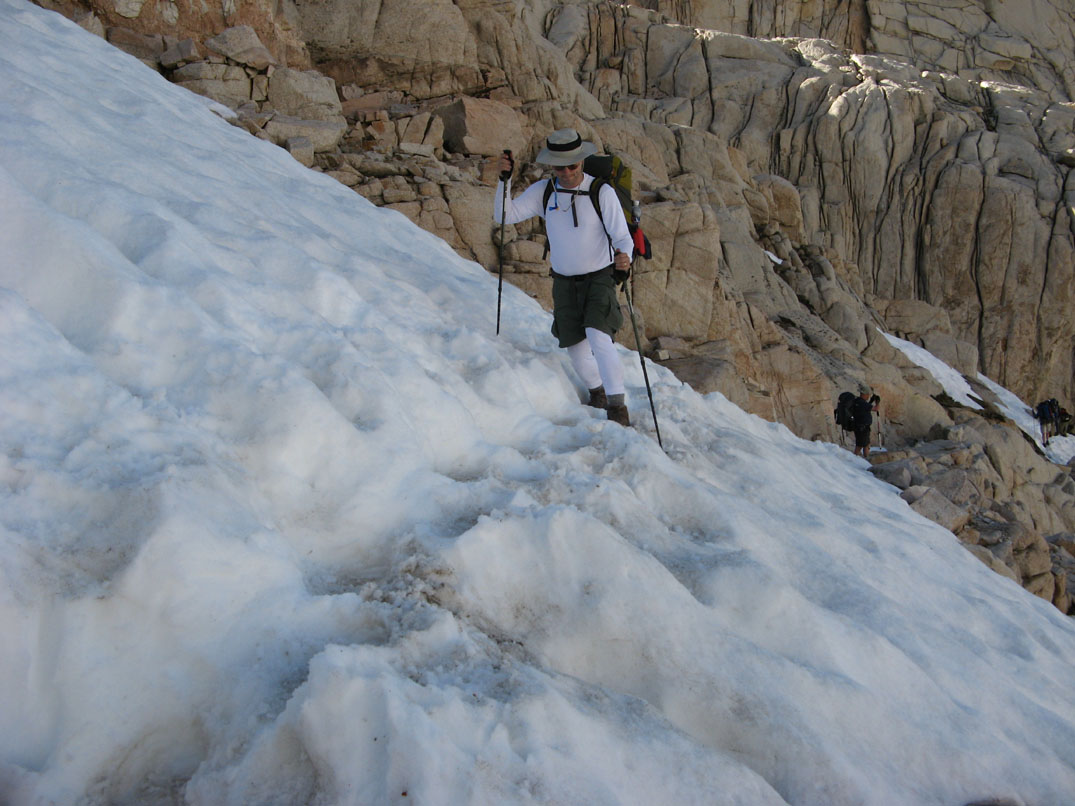
After I crossed the second and more challenging snowy hillside, I sat with my leg shaking. Sure, it was due to some fear and adrenaline. But, it was also sheer exhaustion as it took all my leg strength to balance the nearly 40 pounds on my back. I had the bear canister part of the way down, which pushed me to my limits. For a more skilled hiker or mountaineer, this would have been a fairly pedestrian crossing. But, for me, it was an intense moment I will never forget.
The weather was fantastic last weekend. Clear and crisp. And even though at trail camp at 12,000 feet it was cold (about 30), once I got in my bag, I actually had to shed a layer.
I had no cell phone coverage above 9,000 feet, so I thought my wife may have started worrying about my safety since we were running late. To my surprise, she was fine. She tried consoling me about the fact that I didn’t make it to the summit. But I assured her that was never really the point. I had no ego-driven goals. If I did, I could have easily given it a shot. If I made it to the summit, that would have just been icing on the cake. But making it to the 12,000-foot level was an accomplishment this amateur hiker is proud of, and something I can build upon for future adventures.

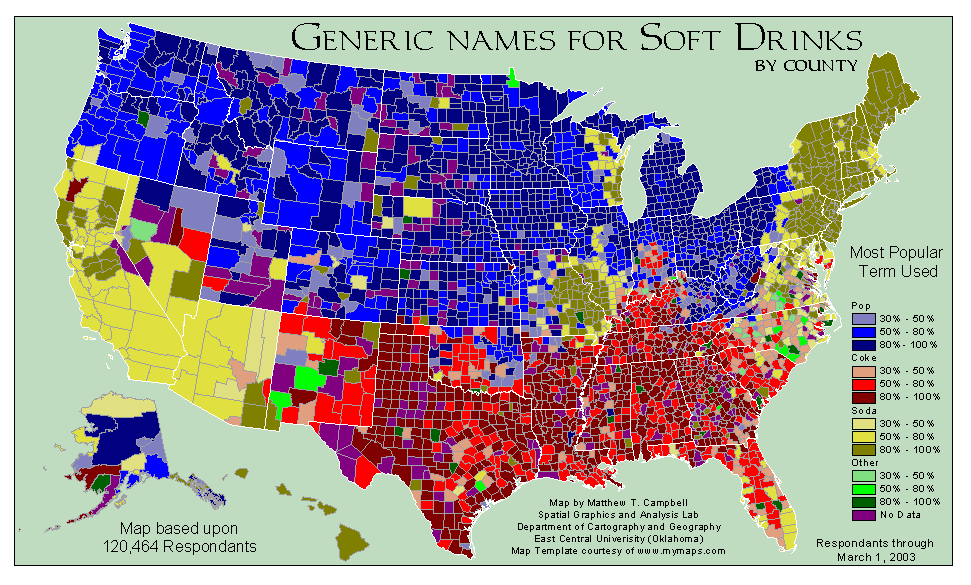
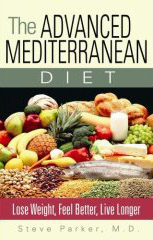



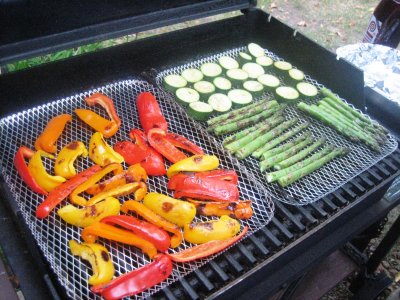 2. Grill
2. Grill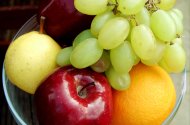 4. Fruits
4. Fruits








